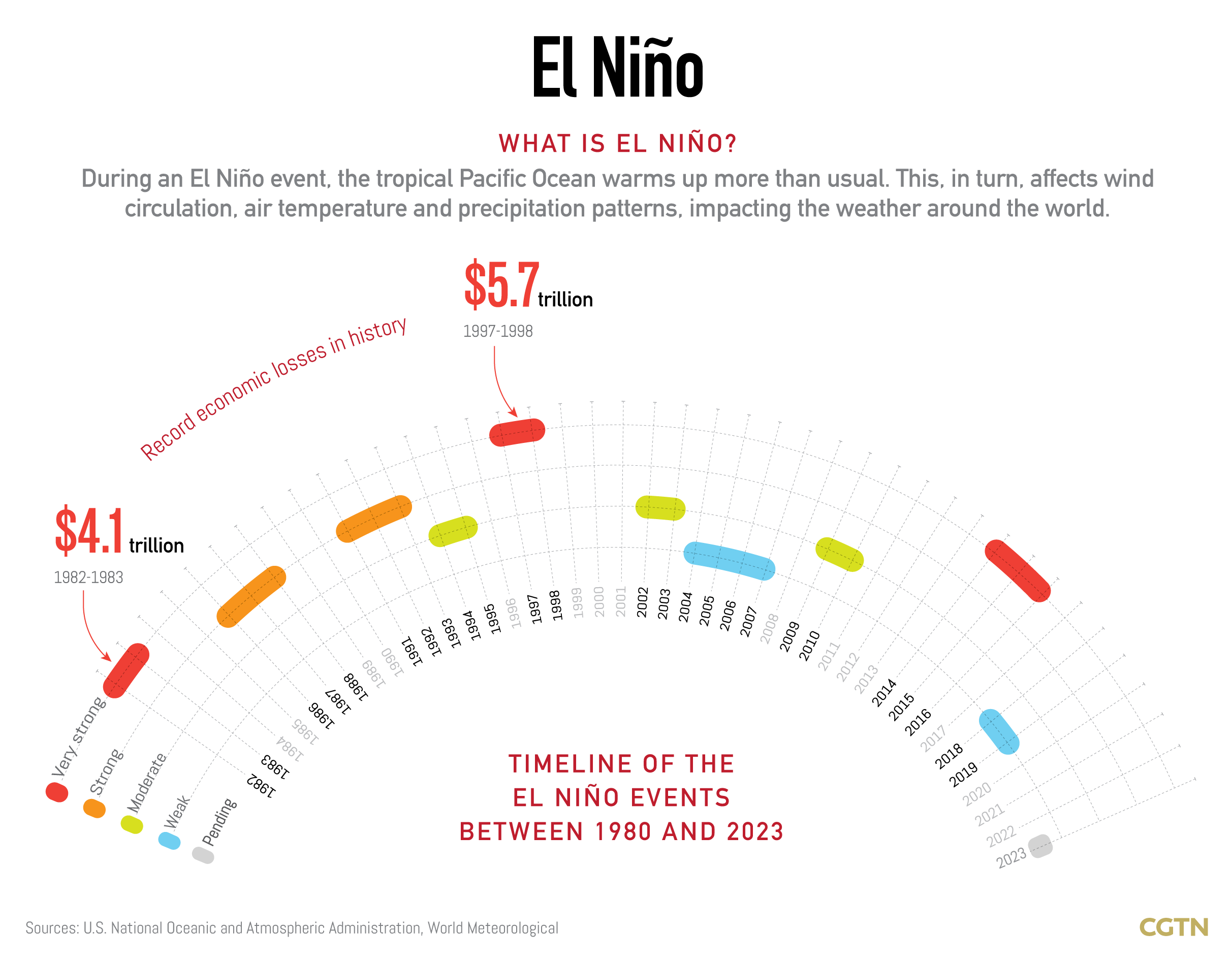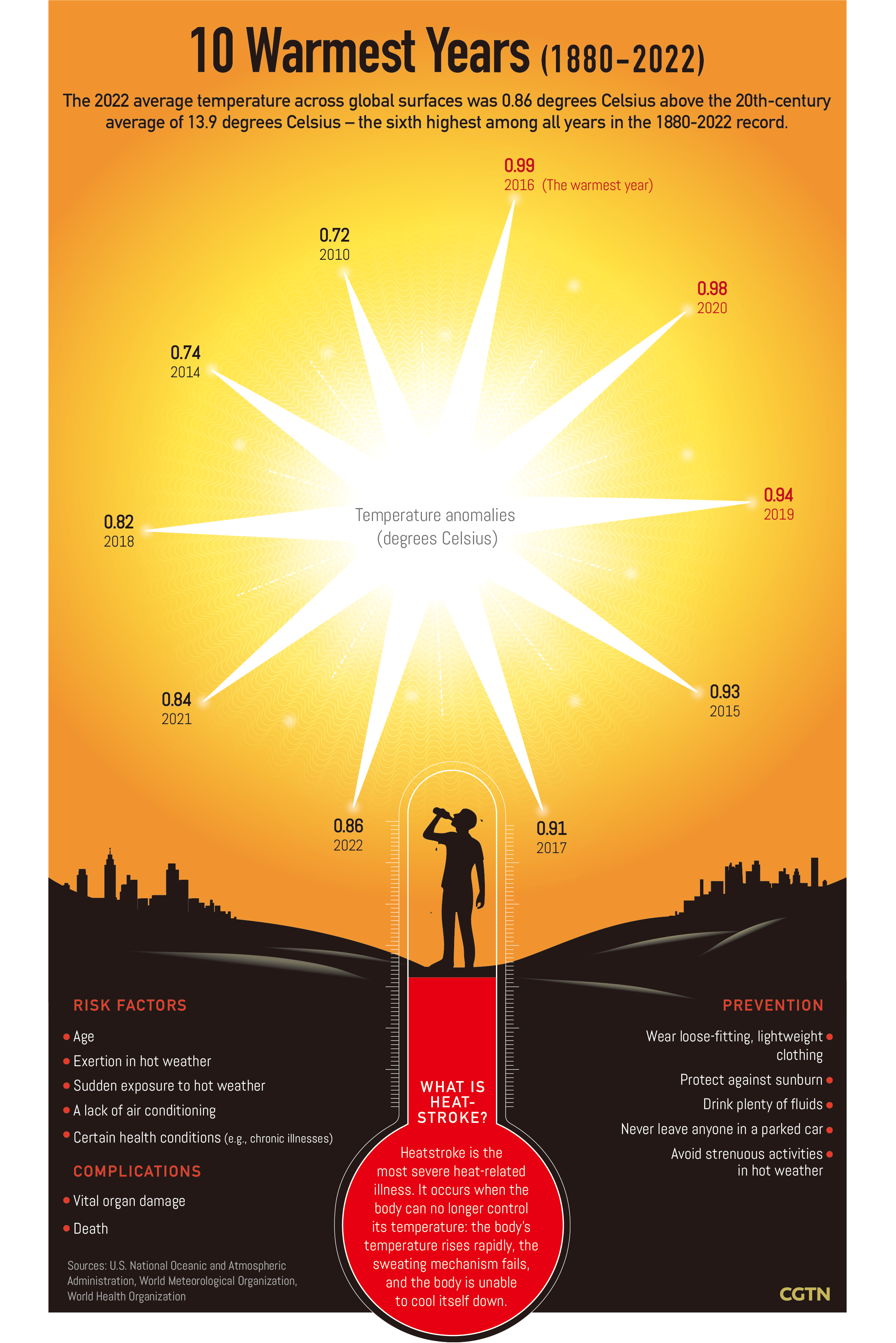El Niño conditions have developed in the tropical Pacific for the first time in seven years, the World Meteorological Organization (WMO) declared on Tuesday, leading to a possible surge in global temperatures.
El Niño occurs on average every two to seven years, and episodes typically last nine to 12 months. During an El Niño event, the tropical Pacific Ocean warms up more than usual. This, in turn, affects wind circulation, air temperature and precipitation patterns, impacting the weather worldwide.

During El Niño events, the warmer water pushes the Pacific jet stream's strong air currents further to the south and the east. It could cause extreme weather like rainfall, extreme high-temperature and drought.
A new update from the WMO also forecast that there is a 90 percent probability of the El Niño event continuing during the second half of 2023. It is expected to be at least of moderate strength. Three very strong El Niño events occurred in 1982-1983, 1997-1998 and 2014-2016.
According to the latest El Niño-related study published in the journal Science in May, global economic losses could amount to $84 trillion by the end of the 21st century due to the increase in the frequency and strength of future El Niño events. The authors also found that a powerful El Niño event from 1997 to 1998 set world GDP back $5.7 trillion, and the 1982/1983 El Niño event reduced growth by $4.1 trillion. It is also worth noting that the hottest year on record, 2016, was also an El Niño year, with 0.99 degrees Celsius above the 20th-century average of 13.9 degrees Celsius, according to the data released by U.S. National Oceanic and Atmospheric Administration (NOAA).
After 2022 witnessed a series of tragedies caused by heat waves, extreme weather is hitting new highs and rewriting climatic history in 2023. Starting in April, temperatures are spiking in parts of Europe, Asia and North America. Under extremely high-temperature conditions, protecting yourself against heat and heat-related illnesses like heatstroke is important.

Heatstroke is the most severe heat-related illness. It occurs when the body can no longer control its temperature: the body's temperature rises rapidly, the sweating mechanism fails, and the body is unable to cool itself down. When heatstroke occurs, the body temperature can rise to over 40 degrees Celsius or higher within 10 to 15 minutes and then cause vital organ damage or even death. In order to prevent heat stroke, it is helpful to wear loose-fitting clothes, drink more water and avoid strenuous activities in hot weather.
Read more:
What is El Nino and how does it heat up our world?
July 4 breaks Earth's hottest day on record
Heatwave hits China - will this summer be even hotter?
Data editor: Sun Yiwen
Graphics designer: Mukesh Mohanan